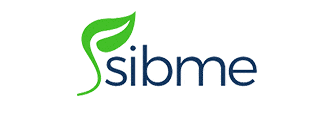Here at Sibme we know video is catching on as a must have tool for schools when it comes to accelerating teaching & learning. Video is not new when it comes to enhancing instructional coaching and professional learning, but the process of capturing, organizing, viewing, and analyzing video has never been easier.
Thanks to the rise of smartphones and tablets, cloud computing, and improved infrastructure and bandwidth in schools and districts throughout the United States, video-based professional learning is no longer a luxury, but a necessary tool for improving our productivity and effectiveness as professional educators.
We recently had a chance to sit down with Ferron Morgan, Dean of Curriculum & Instruction, at Denver School of Science and Technology: Cole High School on why their school has made the shift to incorporate video into their instructional coaching and professional learning process with Sibme.
Q: How long have you been an educator, and why did you go into the field of education?
A: This is my 13th year in education. I got into education because had a burgeoning interest in working with students after graduating from Rice University.
Q: What is your current role at DSST: Cole High School?
A: I’m the Dean of Curriculum and Instruction. My primary responsibility is to drive the instructional culture of the school through building and empowering our teachers as the biggest lever for students’ growth
Q: Had you ever videotaped teachers before using Sibme?
A: No, I hadn’t.
Q: Why do you think video has the potential to improve the instructional coaching process?
A: It make the entire feedback process very objective. Since videotape “shows what it shows” the conversation can now shift to addressing what is evident in the video rather than having repeated conversations about what an observer subjectively saw.
Q: How do you currently use the Sibme video coaching and collaboration platform at DSST: Cole High School?
A: We use the platform on two levels. The instructional coaches videotape each teacher 1-2 times a week as part of our regular coaching cycle. Also, several teachers are now transitioning into videotaping themselves for self-reflection and peer collaboration. Our goal is to move teachers to take ownership over their own development.
Q: Are your teachers and instructional leaders comfortable videotaping themselves?
A: Yes, especially the more we use the platform
Q: When it comes to recording, hosting, and sharing video there are other solutions. Why did you choose Sibme?
A: We chose Sibme because of its user-friendly interface and structure along with its robust video recording features that are offered on the platform. We also like that you can edit the video after upload on the web or from the iOS app before upload. You can also pause a recording during a lengthy observation, bookmark comments while recording an observation, which helps when capturing micro-teaching moments. This saves every one a lot of time when it comes to reflecting and conversing about instruction post-observation. Security and privacy is also important to us, and Sibme takes this seriously. Sharing videos of teachers and students on public websites like YouTube is risky for schools, since they do not have complete control over their data, nor is it FERPA or COPPA compliant.
Q: What is your favorite Sibme feature?
A: I really like the customizable tags/comments that can be added to videos to really highlight various elements of instruction.
Q: If you were to give any advice to instructional leaders who are considering implementing video into their instructional coaching process, what advice would you give?
A: Rollout the program during 1-on-1 check-ins. Avoid whole group presentations, as this program has a lot of nuance, and I believe the former context allows for deeper understanding and internalization.


